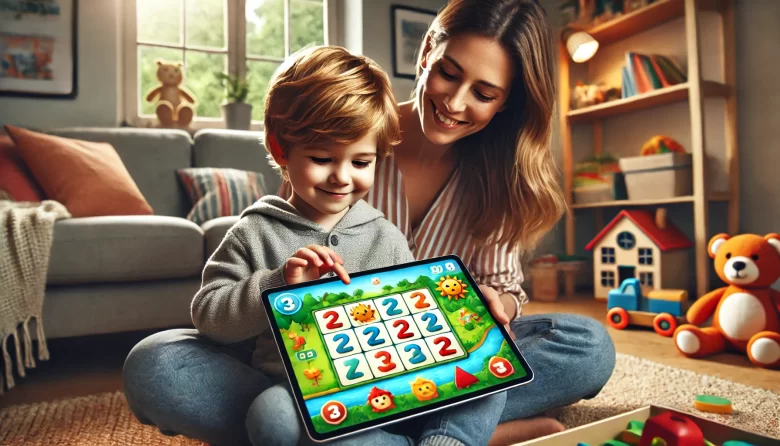Video games have long been a topic of debate in early childhood education. While some believe they are merely distractions, research shows that well-designed video games can support cognitive development, problem-solving skills, and social learning.
So, how do video games positively or negatively impact a child’s learning experience? And how can parents ensure they are used responsibly?
In this comprehensive guide, we’ll cover:
✅ The benefits of video games for cognitive and social development
✅ The potential risks of excessive gaming
✅ The best educational video games for young learners
✅ Strategies for healthy gaming habits
✅ Expert recommendations on screen time and balance
Let’s dive in! 🎮📚
The Benefits of Video Games in Childhood Learning
Many parents worry about video games, but research suggests they can offer several educational benefits when chosen and used correctly.
🔹 How Video Games Support Learning
✅ Enhances Problem-Solving Skills – Many games require children to analyze situations, develop strategies, and make decisions.
✅ Boosts Memory and Cognitive Flexibility – Games that involve patterns, puzzles, and strategy improve working memory and adaptability.
✅ Encourages Creativity – Sandbox games like Minecraft promote design thinking, creativity, and experimentation.
✅ Improves Hand-Eye Coordination – Interactive games enhance fine motor skills and spatial awareness.
✅ Teaches Collaboration and Communication – Multiplayer and co-op games help children develop teamwork and social skills.
📌 Key Takeaway: When used in moderation, video games can enhance learning, not hinder it.
The Risks of Excessive Gaming
While video games have educational value, excessive screen time can pose certain risks.
🚨 Potential Negative Effects of Overuse
❌ Reduced Physical Activity – Excessive gaming can lead to a sedentary lifestyle.
❌ Impaired Sleep Patterns – Playing late at night can disrupt sleep quality and routines.
❌ Decreased Attention Span – Fast-paced games may impact a child’s focus and patience for real-world activities.
❌ Emotional Frustration – Some games encourage competition that can lead to frustration or aggression.
❌ Exposure to Inappropriate Content – Without proper supervision, children may encounter violent or unsuitable material.
📌 Solution: Moderation, parental involvement, and age-appropriate content are key to minimizing these risks.
The Best Educational Video Games for Young Learners
Not all video games are created equal. Some promote active learning, while others are purely for entertainment.
🎮 Top Educational Video Games for Kids
| Game | What It Teaches | Age Group |
|---|---|---|
| Minecraft: Education Edition | Creativity, STEM, and coding | 6+ |
| Osmo Learning System | Hands-on problem-solving and math | 4-10 |
| PBS Kids Games | Literacy, math, and social skills | 3-7 |
| Toca Life World | Creativity and role-playing | 4-8 |
| LEGO Builder’s Journey | Logic, spatial reasoning | 6+ |
| Scratch Jr | Coding and storytelling | 5-7 |
| DragonBox Numbers | Math fundamentals | 4-8 |
📌 Key Takeaway: Choose interactive, educational games that encourage thinking, creativity, and skill-building.
How to Ensure Healthy Gaming Habits
🕒 Setting Screen Time Limits
According to the American Academy of Pediatrics (AAP):
✅ Ages 2-5: No more than 1 hour per day of high-quality screen time.
✅ Ages 6+: Ensure screen time is balanced with physical activity and social interaction.
📌 Tips for Parents to Manage Gaming Time
✔ Use a Timer – Set limits using parental controls or physical timers.
✔ Encourage Breaks – For every 30 minutes of gaming, have 10 minutes of movement.
✔ Prioritize School & Social Play – Gaming should not replace reading, outdoor play, or family time.
✔ Make Gaming a Reward – Use gaming time as a motivational tool for completing daily responsibilities.
How Parents Can Make Gaming More Educational
🎯 Play Together – Engage in co-op or educational games to make gaming a shared learning experience.
🎯 Ask Questions – Encourage critical thinking by discussing in-game decisions:
- “Why did you choose that move?”
- “What’s your strategy for solving this puzzle?”
🎯 Blend Digital & Real-World Learning – Connect game lessons to real life: - If a child builds a house in Minecraft, encourage drawing blueprints on paper.
- If they play a cooking game, let them help prepare a real meal.
📌 Key Takeaway: Parents can turn gaming into a collaborative, educational experience instead of passive screen time.
Future Trends: The Evolution of Educational Gaming
The gaming industry is evolving to support learning in new and exciting ways:
🚀 Augmented Reality (AR) & Virtual Reality (VR) – Immersive educational experiences where kids explore history, science, and space in 3D.
🤖 AI-Powered Learning Games – Games that adapt difficulty levels based on a child’s progress.
🎭 Interactive Story-Based Games – Narrative-driven games that enhance reading comprehension and decision-making.
As technology advances, video games will play an even bigger role in interactive education.
Final Thoughts
✔ Video games can be powerful educational tools—when chosen wisely.
✔ Select age-appropriate, educational games that encourage creativity, problem-solving, and social interaction.
✔ Set healthy screen time limits to ensure gaming is balanced with physical play and family time.
✔ Engage with your child’s gaming experience—play together, ask questions, and integrate lessons into real life.
✔ Use video games as a supplement to learning, not a replacement for real-world experiences.
By following these strategies, parents can transform video games into a positive, enriching part of a child’s education.




